SAVRR
One Card to rule them all.
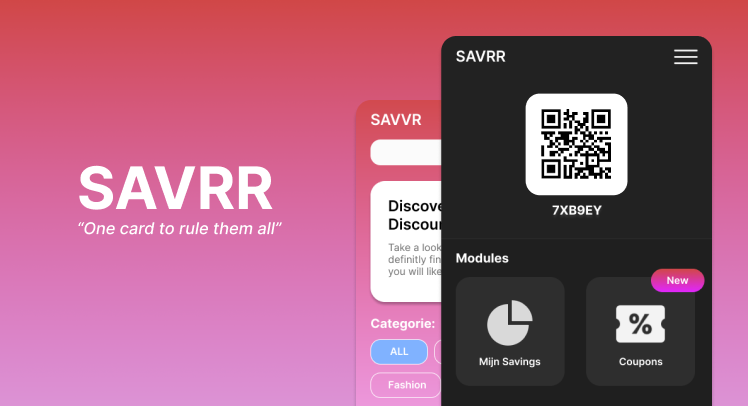
SAVRR
SAVRR is an innovative application that integrates all modern Point of Sale (POS) systems, providing small to medium-sized businesses with an easy-to-use loyalty program. For consumers, it offers a single card that consolidates all their loyalty points and rewards.
The assignment:
Create a loyalty system that is both easy to use and affordable for small to middle-sized businesses.
My role:
UX research, UI Design, Logo Design.
Work method:
Agile scrum, design thinking.
Chapter 1
Research
How to work with POS systems
A Point of Sale (POS) system is a combination of hardware and software that businesses use to complete sales transactions. Modern POS systems not only handle sales but also integrate inventory management, customer management, and other essential business functions. Understanding and working with these systems was crucial for our project because we aimed to automatically integrate product data and other essential business information into our loyalty program.
In our initial research phase, we investigated several POS systems commonly used by small to medium-sized businesses, including Lightspeed and Mollie. Our focus was on identifying POS systems that were widely adopted by our target market.
However, we encountered several challenges during this phase. One significant obstacle was the requirement to have a business account, which necessitated registering as an official business or opening a business bank account. Additionally, some POS systems required us to purchase, rent, or lease hardware to conduct testing. While some systems provided APIs, they often required written permission or a formal partnership to access, complicating our efforts to build a minimum viable product (MVP) for testing.
Although we did not collaborate directly with POS providers or experts, we set up test accounts for our developers and engaged with expert groups specializing in POS systems. These interactions provided valuable insights and facilitated our understanding of the technical landscape.
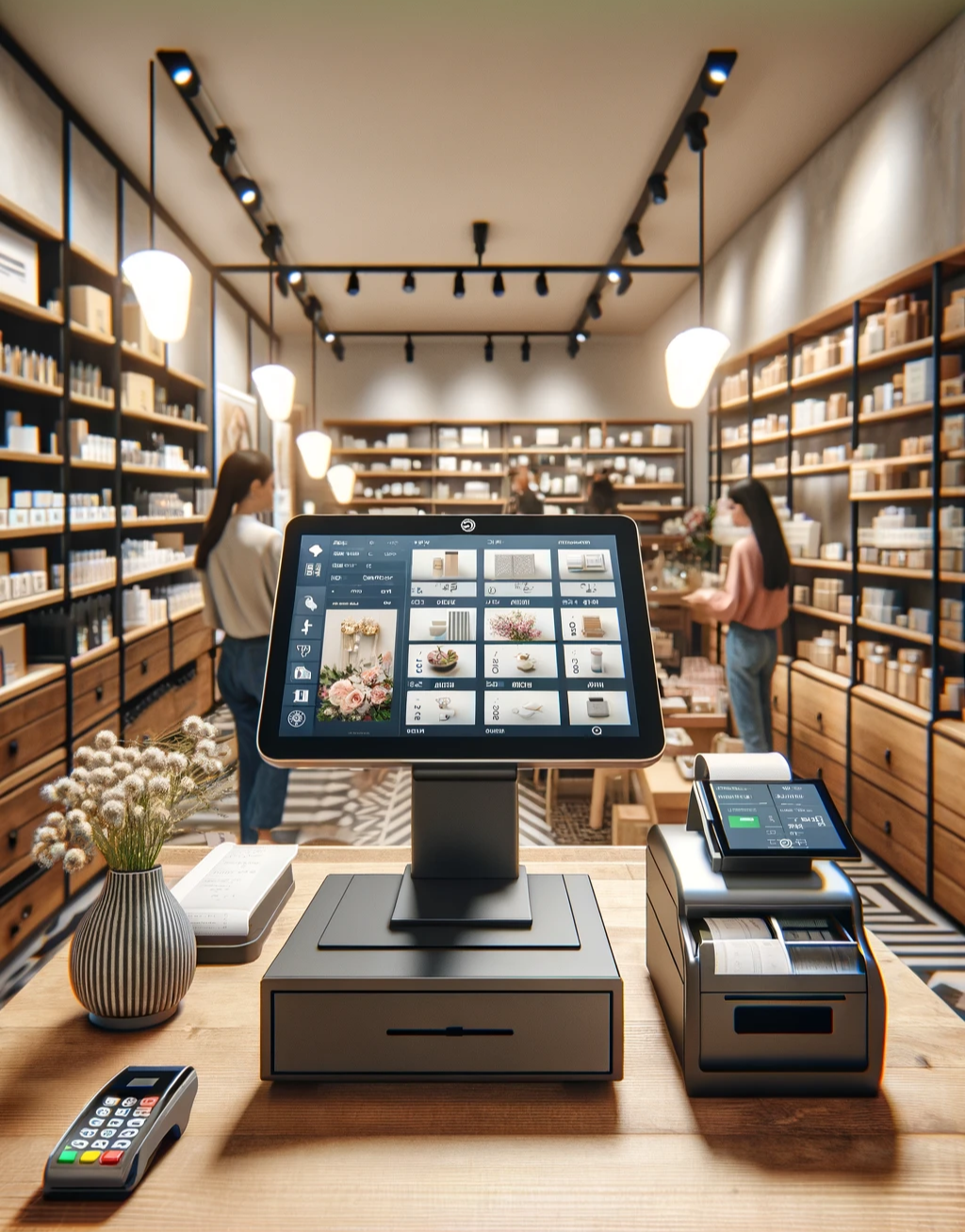
User research.
To understand the needs and preferences of our target users, we conducted extensive interviews. Our primary goal was to uncover which POS systems were used by small to medium-sized businesses, their reasons for choosing these systems, and how they utilized them. We also investigated whether these businesses had existing loyalty systems or apps, their experiences with competitors' solutions, and their likes and dislikes.
Our primary user groups included small to medium-sized businesses, larger businesses, and consumers, with a particular focus on students. We aimed to help local businesses establish their own loyalty systems, offering attractive discounts similar to those provided by larger chains. For instance, large chains like Albert Heijn offer points that can be redeemed for theme park tickets, a capability beyond the reach of smaller businesses due to financial and technical constraints. Our goal was to bridge this gap by enabling businesses to create their own promotions and deals within our app, view customer data, and enhance customer loyalty. We also aimed to help students explore their cities and find great deals.
Key insights from our user research revealed that many businesses desired a loyalty system but lacked the financial means or technical know-how to implement one. While some used competitors' solutions, these systems were often underutilized or not used at all, indicating a significant opportunity for improvement.
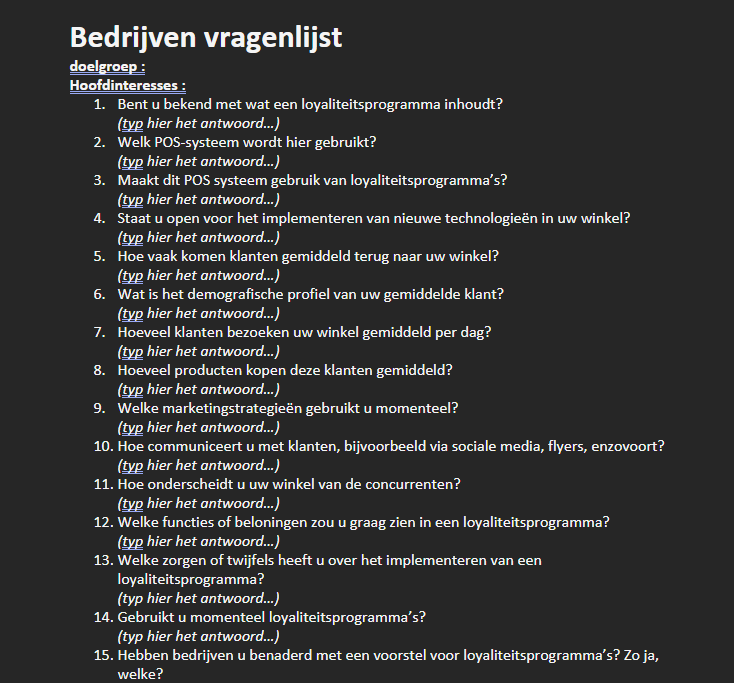
Competitor analysis
In our competitor analysis, we examined several loyalty programs without naming specific competitors on our website. We focused primarily on the user interface (UI) and user experience (UX) of these loyalty programs. Our analysis revealed that the UI and UX of local competitors were subpar. The process of managing multiple loyalty cards and finding businesses was cumbersome and inefficient. Additionally, we had concerns about their compliance with GDPR standards. Overall, the interactions within these loyalty programs were unsatisfactory, despite their integration with major POS systems.
In summary, our research phase highlighted significant opportunities for improvement in the loyalty system market, particularly in terms of user experience and accessibility for small to medium-sized businesses. These insights informed the subsequent phases of our project, guiding our efforts to develop an innovative and user-friendly loyalty program.
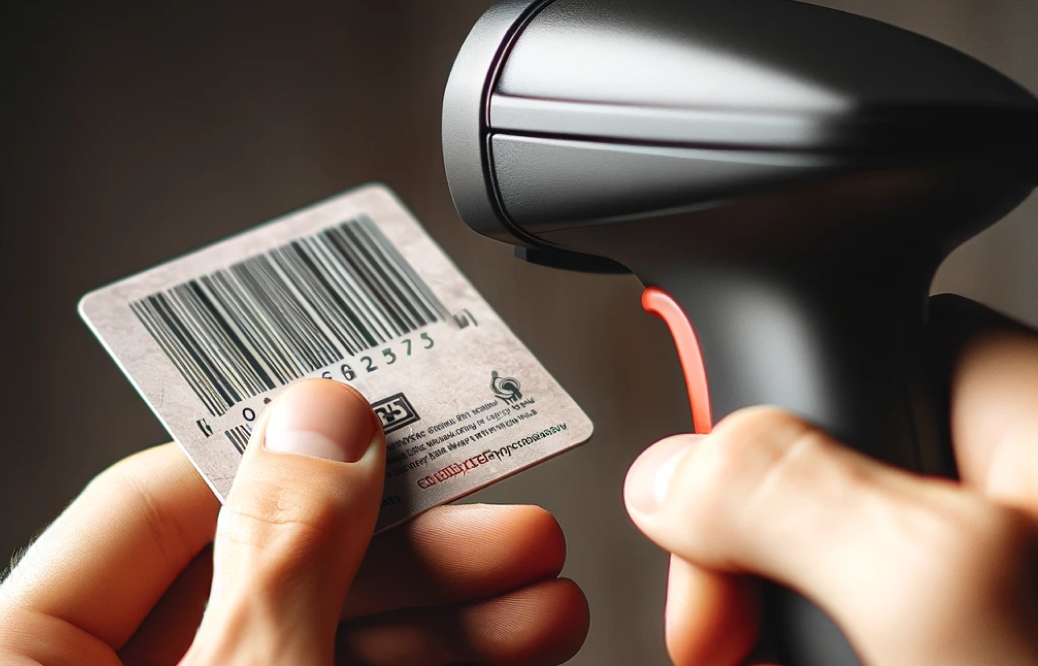
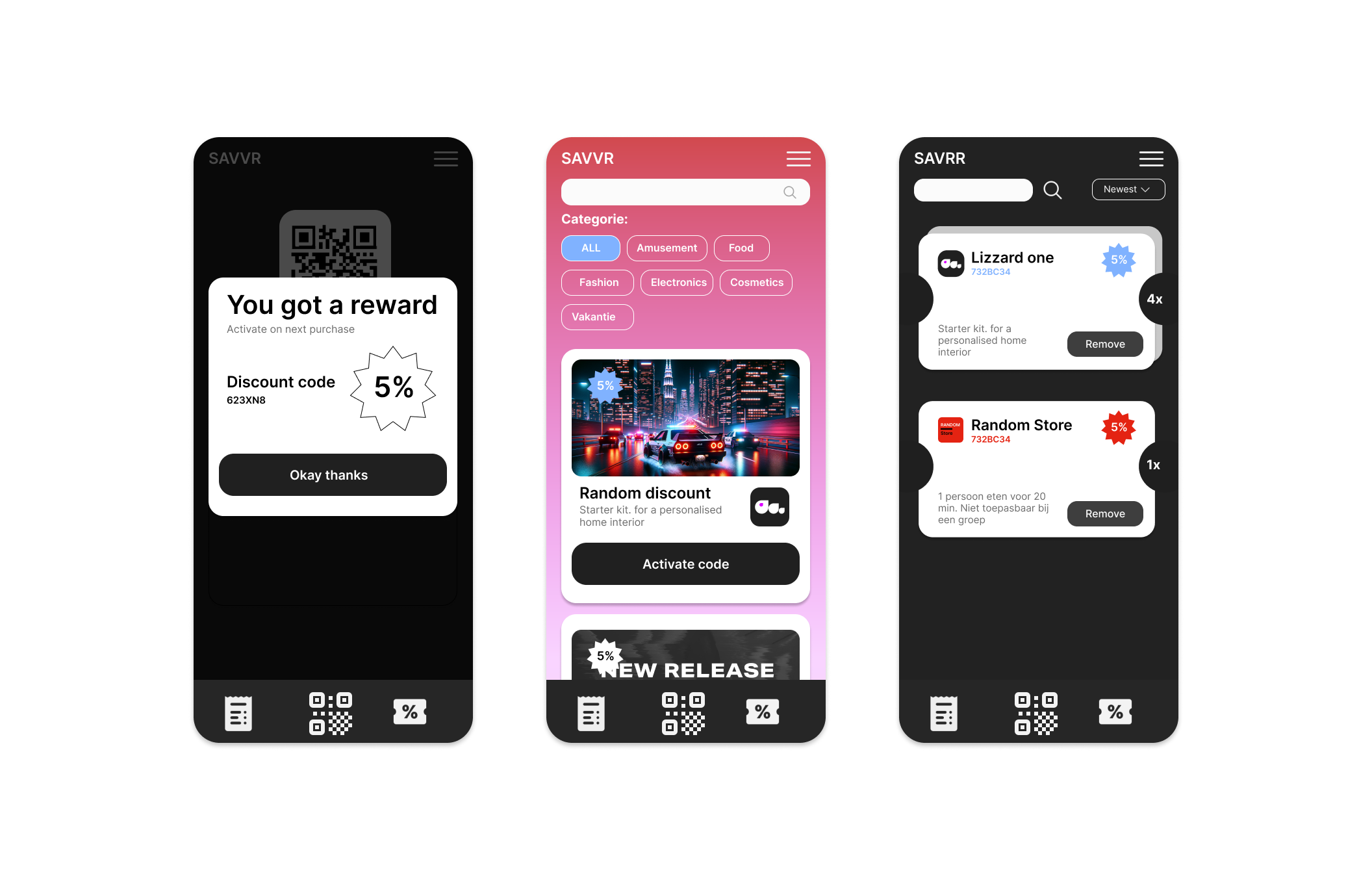
Chapter 2
Analysing & defining, ideate
Willingness from Stores but Not Aware of Opportunities
Many stores expressed a strong interest in adopting a loyalty program, provided it was easy to set up and user-friendly for the businesses themselves. They emphasized the importance of affordability and the need for data insights to understand the program's benefits. For students, the appeal of the loyalty program lies in receiving relevant discounts and discovering new shops or places through unique offers available only through the app.
What Specific Opportunities Were Stores Unaware Of?
Stores were generally unaware that a bundled savings program was a feasible option. They also didn't realize how simple and cost-effective it could be to integrate a loyalty app into their existing systems. This lack of awareness presented a significant opportunity for us to educate and offer a solution that met their needs.
The Concept
The core concept of our loyalty system is an app designed for small to medium-sized businesses, targeting young people and students. The app offers bundled savings promotions, sponsored discounts, and special deals, all accessible through a shared loyalty card or barcode used at participating stores. Businesses can create their own unique loyalty promotions within their stores and take advantage of various features to enhance customer engagement and retention.
Chapter 3
Prototyping, Iterating.
High-Fidelity Prototyping for Consumers
We created a lo-fi prototype for the app that we wanted to create since that is the part we had to focus on. In agreement with the stakeholder, we made two flows which was the most important ones. One related to searching jobs, an introduction course, and an actual challenge. The lo-fi showed the steps of how a user can connect to the board, which is by scanning the QR-code on the screen.
We conducted several rounds of testing with potential users to gather feedback on the design and functionality.
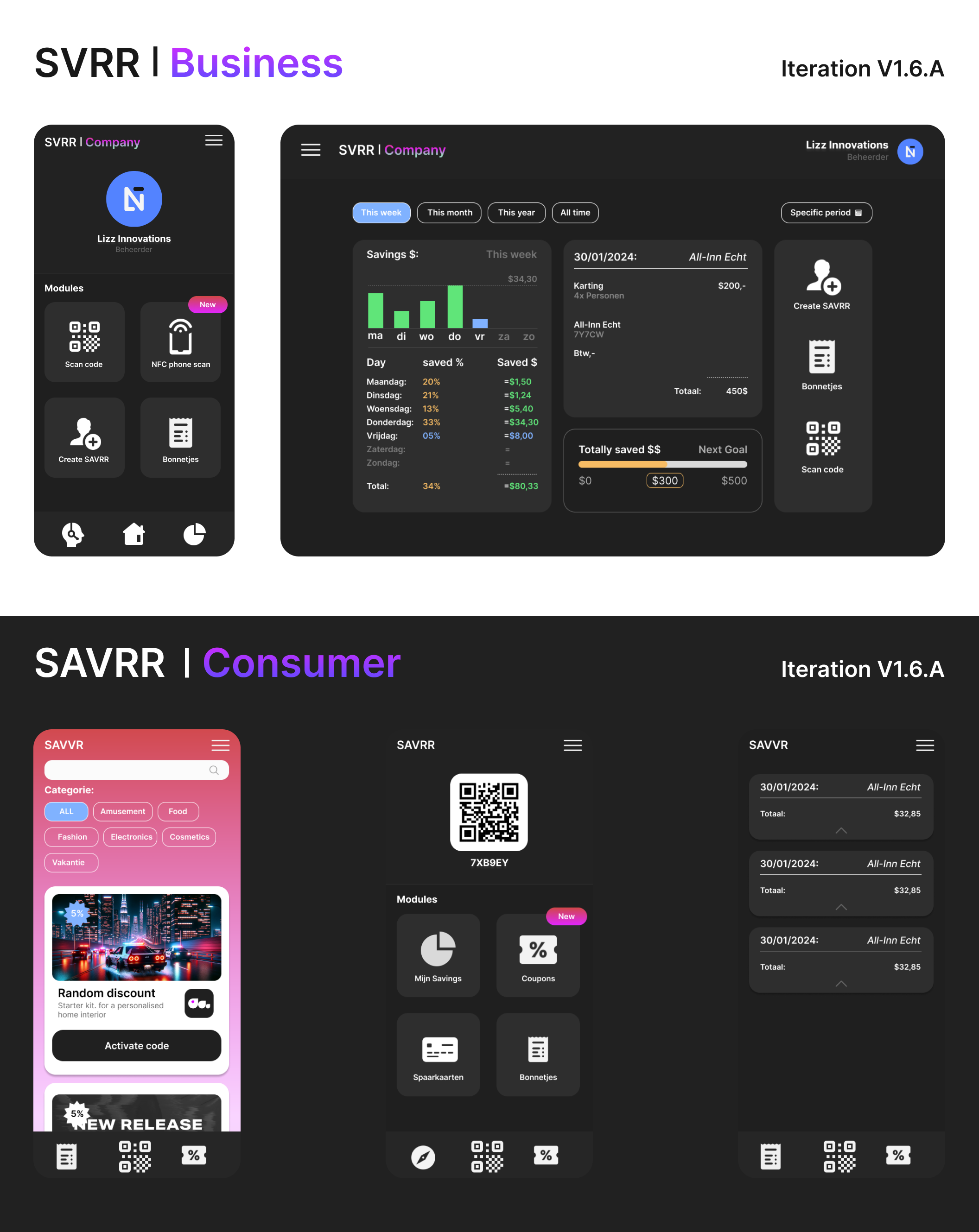
High-Fidelity Prototyping for Businesses
For the business-facing app, SVRR Business, we developed both a mobile app and a desktop version. The mobile app was designed to provide businesses with real-time statistics and allow them to scan consumer QR codes, offering personalized discounts and promotions. The desktop app focused on more detailed analytics and management features.
Using Figma, we created detailed prototypes that incorporated modern design principles, ensuring the interface was clean and user-friendly. Key features of SavRR Business included:
Real-Time Statistics, QR Code Scanning, Personalized Discounts, User Feedback,
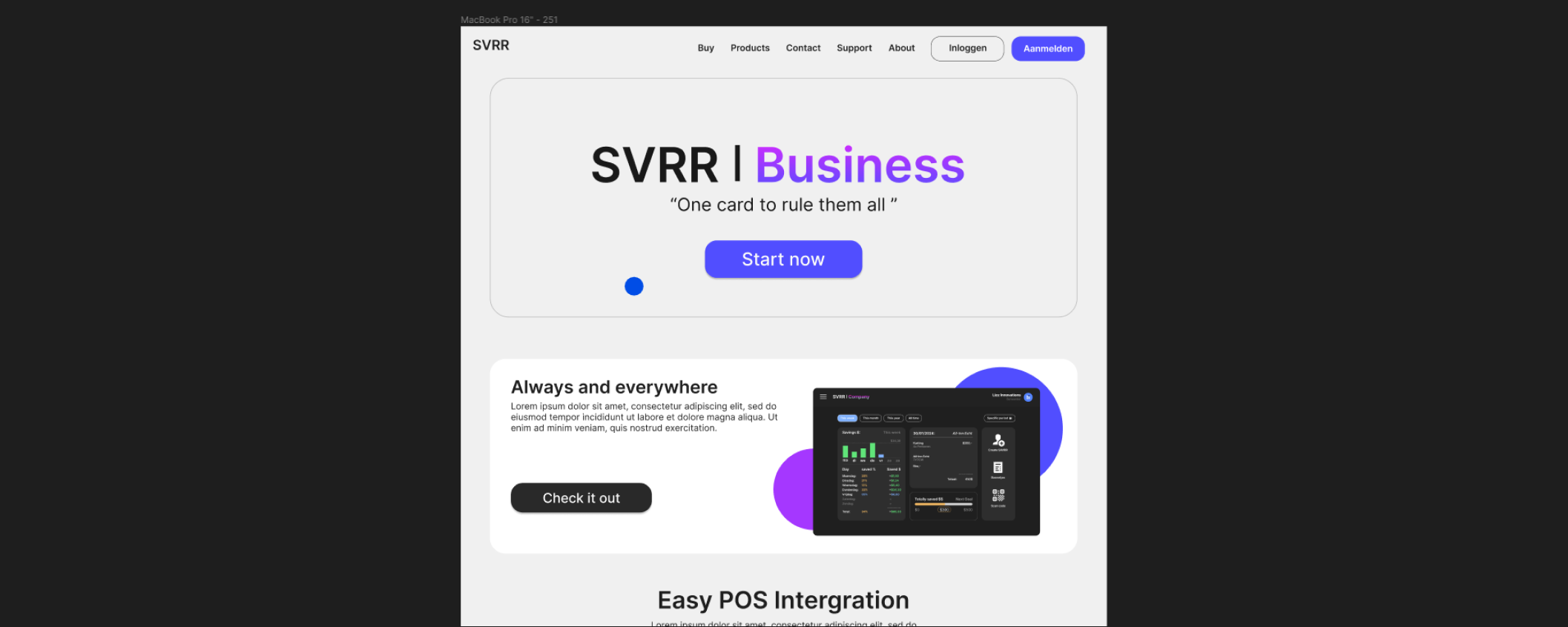
Chapter 4
Validation
User testing
To validate our designs, we conducted comprehensive user testing sessions. We recruited participants by approaching random students on various school campuses and engaging some business owners. This diverse group provided feedback from both ends of our user spectrum.
During the testing sessions, students were asked to perform tasks such as finding specific stores, identifying interesting discounts or promotions, and evaluating the app's overall user-friendliness. Business owners were encouraged to explore the app's features, consider potential uses for their business, and examine the dashboard for valuable insights.
We collected both qualitative and quantitative data during these sessions. Qualitative data included user impressions, ease of use, and specific likes or dislikes about the app. Quantitative data measured task completion rates, the time taken to complete tasks, and the number of errors encountered.
Results
The key findings from our user testing were insightful. Participants praised the design of the apps, noting that it resembled modern payment apps like Revolut, which was one of our design goals. Business owners indicated a need for more features related to the setup part of SAVRR, which we identified as a future development area.
Overall, users responded very positively to the design and functionality of the apps. Students found it visually appealing and easy to navigate, while business owners appreciated the potential for engaging customers and accessing valuable data.
Based on the feedback, we made several key adjustments. We improved the hierarchy of the design to enhance user navigation and accessibility of information. Additionally, we added a feature allowing users to receive their receipts in-app, a request that emerged from our testing sessions. These adjustments ensured that our app was not only user-friendly but also equipped with features that addressed the needs of both consumers and businesses.

Let's talk.
My work
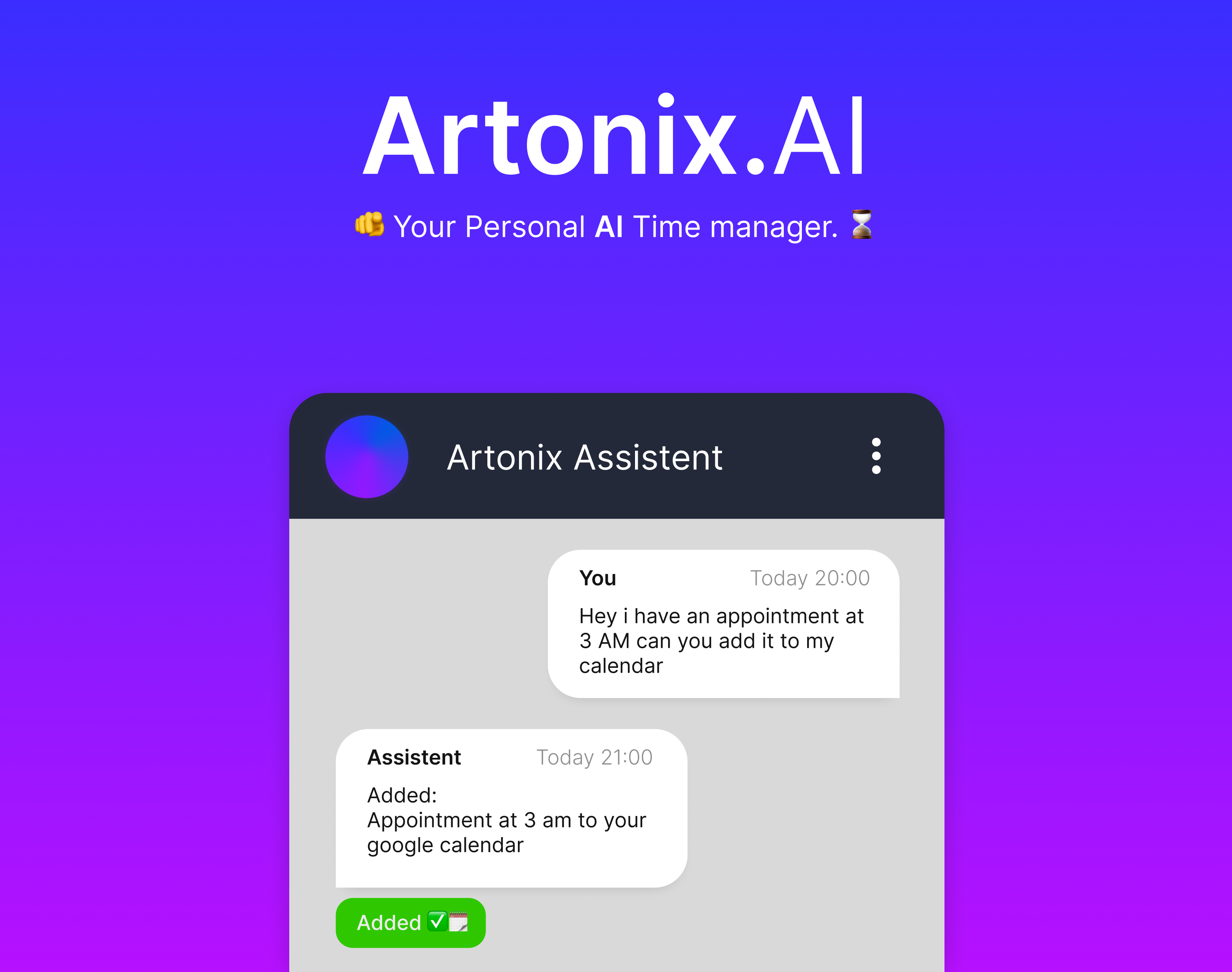
Artonix.AI
Artonix is an AI-powered scheduling assistant that seamlessly integrates with messaging platforms like WhatsApp. It helps users manage their calendar, set reminders, and organize tasks using natural language, making planning effortless and intuitive.
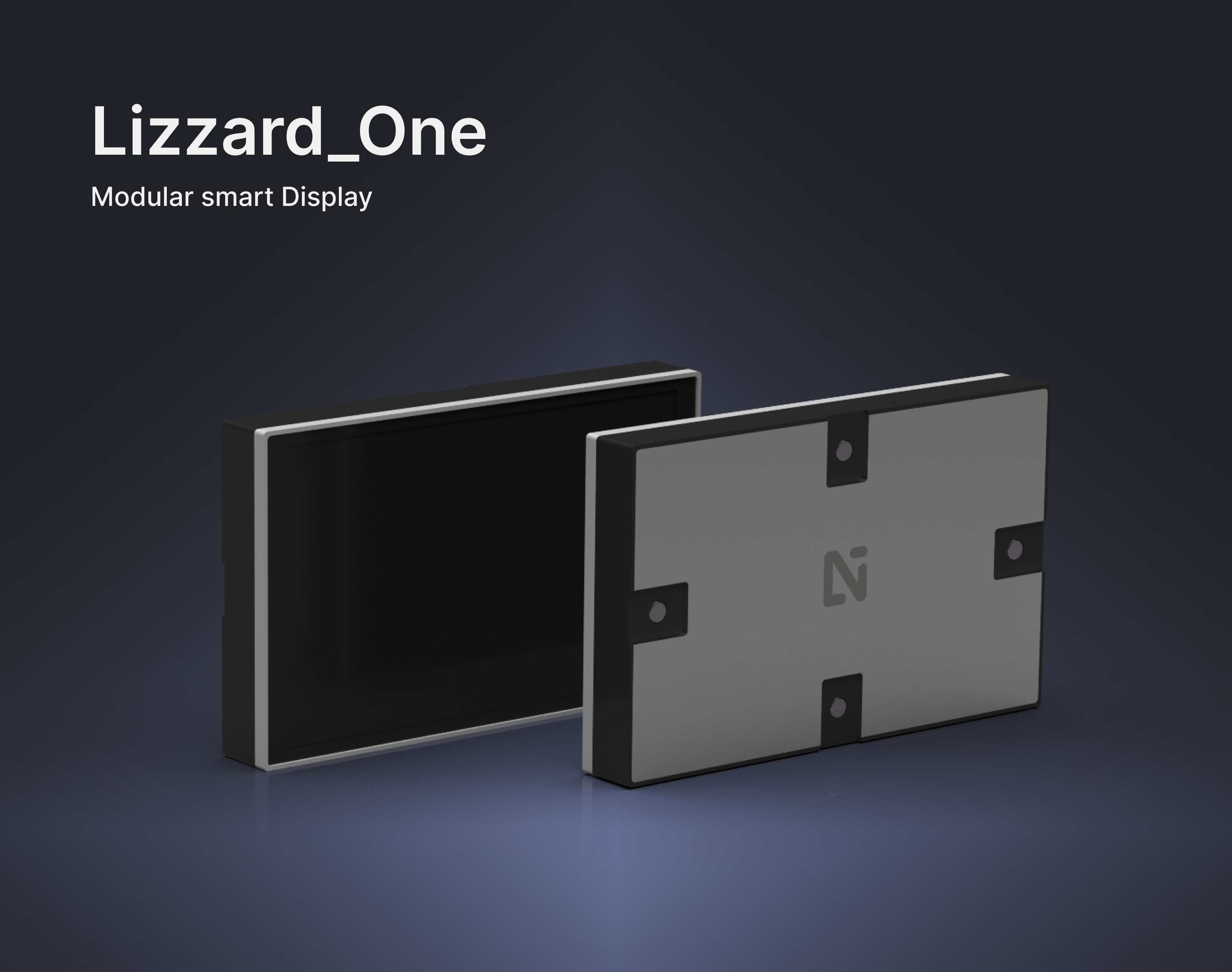
Lizzard_One
Lizzard_One is a modular smart display that adapts to any space, displaying artwork, gaming visuals, or ambient scenes. Seamlessly controlled via smartphone or voice assistant, it transforms your environment with a single tap.
